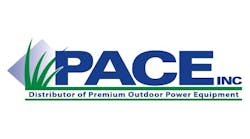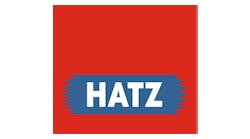Ensure Safety And Service With A GSE Inspection Program
A daily GSE-user checklist inspection program is a must for all operational organizations. Pre- and post-use inspection. Per shift or per day. Of course, the design of your program depends on the size of the operation, the utilization of the equipment and the nature of the operating environment.
Our Matheson program, for example, is designed to capture potential issues prior to an actual breakdown that could obviously disrupt the quality of our service delivery and cost several times the amount to repair.
We assign equipment for user checks as a part of our daily shift assignment roster. We have one person conduct a pre-use inspection and note any issues. We also have the operator of the equipment make additional post-use remarks.
Let’s say that during a pre-use check on a tug, our assigned inspector drives the vehicle, applies the brakes and thinks they are holding just fine. The inspector will assume the brakes are fine in all conditions.
But during operation, the tug driver with a heavy load might notice that the brakes are slowing fading under pressure. If so, that would be an indicator that the master cylinder is starting fail.
These notes would require the GSE mechanic to inspect the situation more critically. We believe this focus on safety and on a specific follow-up will prevent a potential accident from occurring.
We keep our user check sheets very simple. Recommended standard procedures would include equipment numbers preprinted on respective forms with space to include names, notes and space to have the GSE mechanic sign off on any repairs.
In order to ensure accountability, we assign each piece of equipment to an employee and the employee’s name is listed on the GSE-user checklist sheet. To ensure a properly completed and thorough system is in place, some simple items must be preprinted as handy check-off boxes in order to make this an easy-to-use checklist – much like any flight check pilots go through before takeoff:
- Checking all fluid levels.
- Visually inspecting belts, hoses, tires and lug nuts.
- Recording any puddles where the unit was parked that might indicate a leak of critical fluids.
- Checking that all lights and indicators are properly operating.
- Conducting brake checks, including the emergency brake.
These are just basic examples and your list could include others.
The single most important element of a successful GSE-user checklist program is accountability. A critical element of a successful program is instilling confidence in the hearts and minds of our employees by repairing noted items in a timely fashion. This lets them know the program is a corporate priority.
One of the biggest problems you might encounter without a checklist in palce is “pencil whipping” or incorrect reporting. This could cause potential problems that could result in accidents or failures on equipment during operations. And this is the primary reason for our simple form.
Case in point: Several years ago, I was a load master riding in aircraft between Las Vegas and Salt Lake City every night. We were on our approach back into Salt Lake City, when we noticed some flashing lights between the taxi way and runway.
As we landed, we tried to figure out what was going on. Mowing the lawns at 4 a.m.?
As it turned out the flashing lights belonged to a Kubota tractor that one of the cargo companies was using as a tug. Push on the pedal and it would engage the transmission; if the transmission was left in forward, the tractor would take off and go on its own. Which it had that particular morning.
As we touched down across from the tractor we noticed no one was driving it. It was driving in circles all by itself. Come to find out the pedal is held up with a tension spring, that had worn out and no one had reported it. A post-trip report showed that the unit had no issues. But this spring takes time to get this bad!
This is a good example of why we need the pre-trip/post-trip inspections and forms and to be followed up by the lead of the shift to ensure the correct information gets posted. With everything on one sheet and one line item and right next to the time clock, it makes it easy for the crew to make notes. Ultimately, it would be up to the operation’s manager to keep the crew accountable.
In summary, a well-managed GSE-user checklisgt program is essential to operating a safety-oriented, customer-focused business. This is achieved with a defined team effort at all levels of the operating unit. When each employee takes the proper accountable action guided by the leader everything falls into place. It might take energy to get the process created and engrained in the employee’s activity, but a steady approach, focused on the simple items pays huge dividends that transfer to the bottom line.
Brett Barrett has 28 years of experience in aviation starting Evergreen Eagle where he ultimately oversaw 21 mechanics and a rebuild program for more than 200 pieces of GSE. As a station agent for Matheson Flight Extenders, he also oversees GSE purchases and the operations of a GSE rebuild facility.





